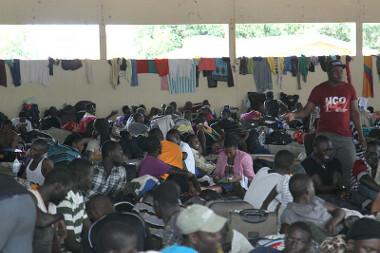Laterization is a process in which the ground accumulates a large amount of hydrated iron or aluminum oxides, which modifies its composition and color, which becomes reddish, with a rust color. It is a process that arises, especially, from the weathering chemical, which is caused by rainwater or irrigation.
Soils subject to laterization tend to become acidic and with a reduced percentage of organic matter, since, in general, the leaching – the process of “washing” the surface of the soil – it is also extreme. The exposure of the soil to the intense sun of the intertropical zone promotes a kind of "cooking" of the surface exposed to heat during the long dry period, making it dry, reducing infiltration, increasing runoff and culminating in the reduction of fertility.
laterite
the latin radical later means brick. The laterization process results in the formation of a hardened crust on the surface of the soil – or just below the surface – made up of metallic minerals such as iron and aluminum. And the
laterite (or laterite) which prevents water penetration, further intensifying the leaching process.Laterization is responsible for genesis of oxisols. This natural process – common in regions with a hot and humid climate –, however, has been intensified by factors resulting from human action.
Which cause the laterization?
Logging - Removing the vegetation cover leaves the soil unprotected and, consequently, susceptible to damage caused by prolonged exposure to the sun and leaching;
Irrigation – Irrigated soils have their laterization intensified by the action of chemical and physical weathering. Soil nutrients are carried away by water, but metallic minerals remain on the soil surface;
fires – in addition to contributing to the removal of vegetation cover, soils subjected to high temperatures become even more acidic and hardened, thus aggravating the laterization process;
Misuse of land – The non-use of soil conservation techniques at agriculture, such as contour lines, no-till and crop rotation, depletes the soil's nutrients, leaving it vulnerable to the laterization process.
By Amarolina Ribeiro
Graduated in Geography
Source: Brazil School - https://brasilescola.uol.com.br/o-que-e/geografia/o-que-e-laterizacao.htm

